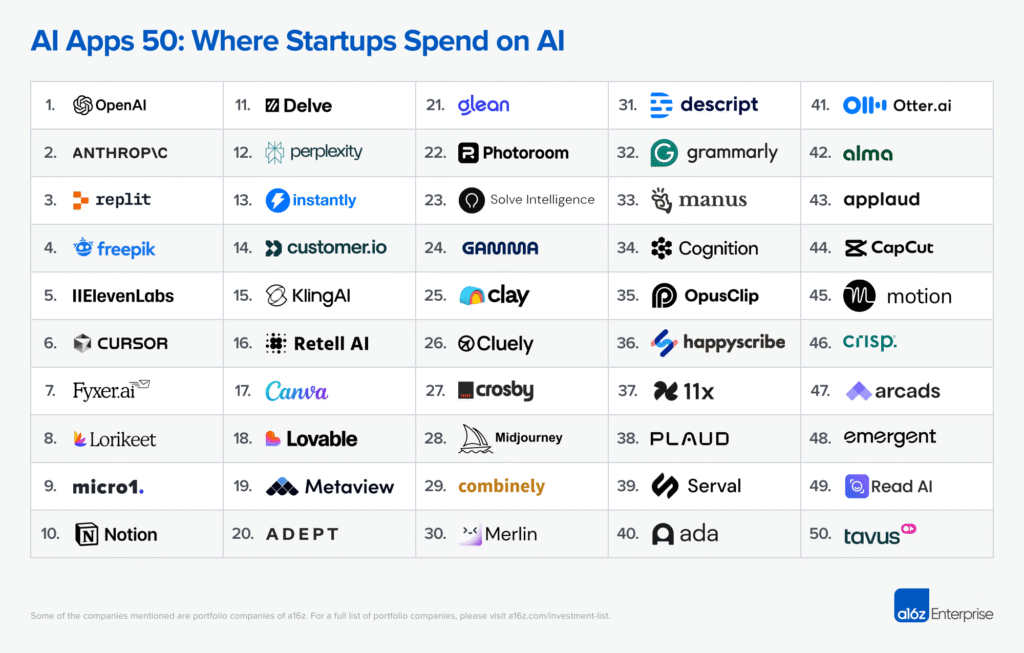
A recent deep dive into startup spending reveals a clear trend: while foundational models from giants like OpenAI are popular, the real investment growth is in specialized AI applications that enhance specific business workflows. For business owners, this signals a shift from simply accessing AI to strategically embedding it into core operations like software development, creative production, and customer service to gain a competitive edge.
What’s Really Happening with AI Spending?
For business owners and professionals, the conversation around Artificial Intelligence has moved from “if” to “how much.” With venture capital funding for AI startups capturing over half of all investment, understanding where this money is flowing is crucial for making smart decisions. It’s not just about buying access to a powerful model; it’s about investing in tools that deliver tangible results.
A groundbreaking AI spending report from Andreessen Horowitz (a16z) analyzed real transaction data and found that while foundational models from OpenAI and Anthropic lead the pack, a diverse ecosystem of specialized applications is capturing a significant share of startup budgets. This shows a market that is maturing from general experimentation to targeted, practical application.
Where Are the AI Dollars Actually Going?
The spending can be broken down into two main categories: the foundational layer and the application layer. While the foundation is necessary, the application layer is where businesses are seeing immediate returns.
| Spending Category | Description | Top Players |
| Foundational Models | The core large language models (LLMs) that power AI tools. | OpenAI, Anthropic |
| AI Applications | Specialized software that uses AI to solve specific business problems. | Replit (coding), ElevenLabs (voice), Freepik (creative) |
Notably, “horizontal” applications—tools that boost productivity across an entire company—make up 60% of the top 50 services startups are paying for. This includes everything from AI-powered coding assistants to automated voice generators and creative suites.
What Does This Mean For Your Business?
The key takeaway is that your competitors are not just buying AI, they are integrating it. The high ranking of a tool like Replit, an AI-native coding platform, proves that businesses are heavily investing in AI to build and innovate faster.
This trend signifies a move from AI as a “copilot,” merely assisting humans, toward AI as an “agent” that can handle end-to-end workflows. For you, this means evaluating which parts of your operation—be it customer service, sales, or HR—can be enhanced by specialized AI tools. As one a16z partner noted, there is a “proliferation of tools,” meaning you have options to find the perfect fit for your specific needs.
How Can You Spend Smarter on AI?
Thinking about your AI budget should go beyond the cost of a monthly subscription. The real investment is in the infrastructure and data preparation needed to make these tools effective.
- Focus on Integration, Not Just Access: Instead of just giving your team access to a general AI chatbot, identify and invest in tools that plug directly into your existing workflows. For example, AI tools that integrate with your CRM can automate sales outreach and analysis.
- Start Small and Measure ROI: You don’t need a massive upfront investment. As business spending on generative AI jumped 500% in 2024, the smart money is on solutions that address clear pain points and demonstrate a tangible return on investment.
- Don’t Forget the “Hidden” Costs: The cost of AI isn’t just the software. It includes training your team, ensuring data quality, and potentially fine-tuning models for your specific use case, which can be significantly more expensive than using an out-of-the-box solution.
Conclusion
The landscape of AI spending is shifting from broad, experimental use to precise, strategic implementation. For business owners, the message is clear: the time to invest in AI is now, but that investment must be targeted. By focusing on specialized applications that solve real-world problems and enhance your team’s productivity, you can ensure your AI spending isn’t just a cost, but a powerful driver of growth. The ultimate goal is to leverage these tools to build a smarter, more efficient, and more competitive business.


